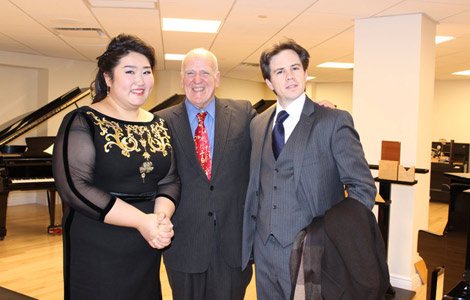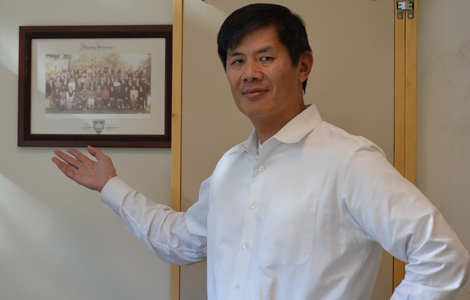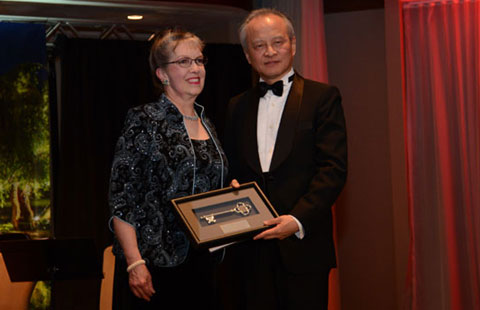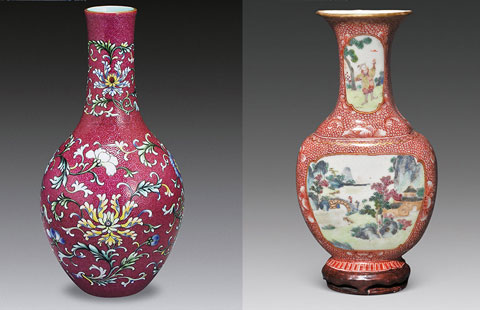Fare hike a billion yuan question
Updated: 2014-07-21 07:36
(China Daily)
|
|||||||||
In this context, London and Hong Kong show that a well-designed fare structure would maximize the use of subsidies for helping low-income people. For example, despite their overall high transport fares, London and Hong Kong both provide healthy concessions to students, disadvantaged groups and senior citizens. Also, regular subway commuters are often offered monthly or yearly travel passes at lower rates. This is better way of providing equitable transport services than keeping fares low, which unfairly favors the high-and medium-income people.
Moreover, the fact that the London tube has a fairly high share (44 percent) and Hong Kong MTR a very high share (more than 70 percent) of the total commuters shatters the myth that high subway fares would deter commuters from using public transport and encourage them to use cars instead. If low fares attract more commuters, how come the share of trips made by cars in Beijing has risen from 25 percent to 33 percent since the beginning of the "subway boom" in the city.
But it is important to realize that reforming the subway fare structure is only the first step toward improving Beijing's entire public transport mechanism, including subways, buses, bicycle lanes and pedestrian facilities. After all, one of the reasons the Beijing subway is overcrowded is the lack of viable transport alternatives.
An increase in subway fares may prompt some commuters to take buses. But that does not necessarily mean that bus services are ready to accommodate an increasing flow of passengers. In fact, the lack of exclusive bus lanes and unreliability of surface transport, particularly because of traffic jams, make regular bus services a weak rival to the subway.
Beijing needs a proper network of different transport modes with varied levels of services and fare structures to cater to the demands of different passenger groups, from permanent residents to tourists, senior citizens to children, and private car owners to dedicated public transport users.
Despite the strong public objection to any increase in transport fares, putting in place a reasonable fare structure is the best way to improve the quality of public transport in Beijing. The authorities, however, should know that improvement means ensuring affordable transportation for low-income people, and equally importantly, providing high quality, reliable transport services so that even car owners are allured into using them. Only in this way can the public transport system function efficiently and cause the least harm to the environment.
The author is director of EMBARQ China, World Resources Institute.

 Music at her fingers
Music at her fingers
 Across America Over the Week (Jan 16 - Jan 22)
Across America Over the Week (Jan 16 - Jan 22)
 Spend Chinese New Year in style
Spend Chinese New Year in style
 Ili river valley becomes a popular destination for swans
Ili river valley becomes a popular destination for swans
 Philip Ma: from scientist to businessman
Philip Ma: from scientist to businessman
 Birmingham's Spotlight on China dinner
Birmingham's Spotlight on China dinner
 How to distinguish doucai, wucai, Famille-rose and enamel porcelain
How to distinguish doucai, wucai, Famille-rose and enamel porcelain
 Xinjiang lake in bumper fishing season
Xinjiang lake in bumper fishing season
Most Viewed
Editor's Picks

|

|

|

|

|

|
Today's Top News
Houston's SW Chinatown
China to focus on reforms, opening of capital market
Slowdown brings new risks to banks
Trade group calls for BIT
Market status for China is 'political' issue
Birmingham's Spotlight on China dinner
Bank takes renminbi-clearing seriously
Traditional Garb
US Weekly

|

|








